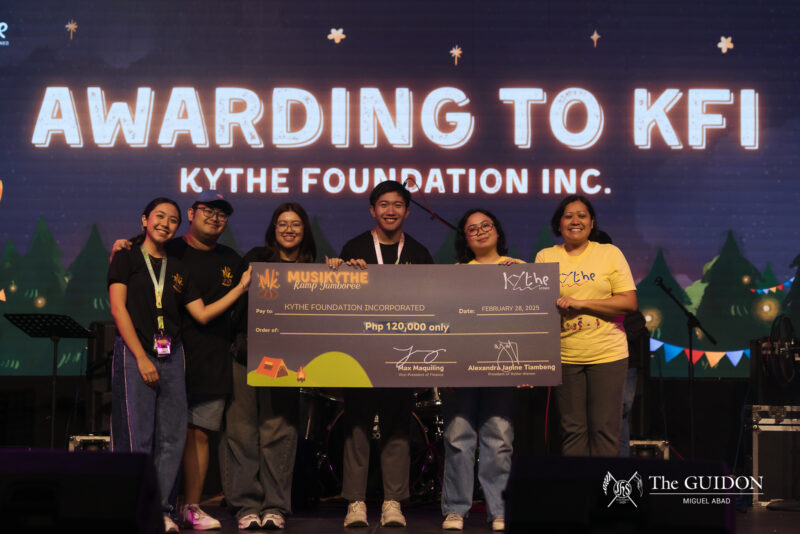IN ORDER to study the reasons behind the failure of the 2014 Sanggunian General Elections, the student government has approved a resolution initiating the Sanggunian Assessment Project (SAP).
The school-wide failure of elections last February left the Sanggunian with 28 empty seats out of its Top 44.
The “Resolution to Initiate the Sanggunian Assessment Project for SY 2014-2015” was submitted by the Sanggunian’s Committee on Constitutional Review (CCR) head Miguel Hamoy, and was approved during a Central Board (CB) meeting held on June 27.
In an interview with The GUIDON, Hamoy pinpointed the three requirements of the resolution: Gathering data, writing an academic paper and presenting the results to the public.
While the SAP is under the CCR, Hamoy himself will be compiling the information and writing the academic paper.
According to Sanggunian CB Liaison Ga-el Mendoza, the idea of creating this resolution stemmed from the meetings of the elected Sanggunian officers during their planning seminar.
Mendoza believes that the 2005 Sanggunian Constitution of the Undergraduate Students of the Ateneo de Manila Loyola Schools was created “from a particular culture that the past Sanggunian observed through their term.”
He explained that the culture has now changed and, thus, wants to observe this change through the SAP. Mendoza hopes that the Sanggunian will then be able to “tailor fit the new constitution to the current culture.”
“By the end of SAP, [the] ideal outcome is to have a constitution that enables the Sanggunian to serve the student body better,” said Mendoza.
In addition, Mendoza expressed his optimism that this research would reveal “the deeper reasons why a lot of people didn’t vote [during the elections].”
Process
Hamoy said that most of the collected data would come from interviews with Ateneo professors who were former Ateneo students, because they have experienced a Sanggunian that is different from the student government Ateneo has now.
He added that he plans to use these consultations to gauge what the possible explanations for the failure of elections are and the possible methods “for finding out why they happened.”
“Since [the SAP] is a research effort, the result will be an academic paper. I’ll be using psychological statistics [and the discipline of] political science to create a theory, since there’s no theory to explain [the failure of elections],” he elaborated.
The resolution then requires the CCR to release the “unaltered” findings of the investigation to the public upon its completion.
“I’ll be releasing all the results to the information dissemination arms of Sanggunian, basically [compressing] all the findings, all the [methods of] action, into bite-sized information for the students,” Hamoy said.
In a separate interview with The GUIDON, Hamoy explained that he would release the results to the CB first; the CB is then free to disseminate as they wish.
Hamoy indicated that the CCR would most likely utilize the Sanggunian’s Department of Public Relations as a primary mode of dissemination.
Progress
According to Hamoy, he has already conducted interviews with several professors in the Political Science, Sociology and Anthropology, Psychology, and Development Studies Departments.
“Those were the fields that I thought were most relevant [to this project],” he said.
In an email interview with The GUIDON, Political Science Department Lecturer Gino Trinidad discussed what he and Hamoy talked about during their interview.
According to Trinidad, the issue concerning the Sanggunian’s failure of elections can be traced back to the “failure to ask and to address the question concerning the power of the Sanggunian as a student government.”
“I told [Hamoy] that I think that there is too much fuss about the function of the Sanggunian to the extent that the question of what really can the Sanggunian do as a student government—which, I believe, is more a question about power rather than function—is not given due attention,” he explained.
As of press time, Hamoy said that he is not at liberty to discuss further details of the project. However, he added that he hopes to have compiled his research by the end of the first semester.
“The deadline for compiling the research paper would be by the end of the semestral break, so that as soon as the second semester starts, I can begin to look at the potential changes, and start implementing whatever the data tells us to implement,” he said.
Into the future
With only until the start of the second semester to accomplish the objectives of the resolution, the predictions for the outcome of this project have been mixed.
Trinidad admitted that from his experience as a student in the Ateneo, apathy for student politics has been an issue that has long plagued the Sanggunian.
“I am keeping my expectations modest: I just hope that the project becomes a springboard for more discussions not only concerning the Sanggunian, but also—and perhaps more importantly—that which concerns politics in Ateneo in general,” Trinidad said.
However, he added, “I think, though, that the project is indeed necessary and long overdue, considering that political participation has really been problematic in Ateneo, at least for the last decade.”
For Hamoy, he hopes that the Ateneo community sees this as an opportunity to help the student government.
He said, “I just want people to know that this is—as much as [this project] might seem like a hassle—this is integral to making sure that the Sanggunian can continue to serve [the students].”






